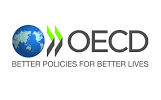By : Wael Elhosany
In the second quarter of 2022, gross domestic product (GDP) in the OECD rose by 0.3% quarter-on-quarter according to provisional estimates, equal to the growth in the previous quarter (Figure 1).
In the G7, quarter-on-quarter GDP growth increased slightly in Q2 2022, by 0.2%, compared with zero growth in Q1 2022. This result reflects a mixed picture. On the one hand, GDP growth was negative in the United States and the United Kingdom (both minus 0.1%), and GDP growth in Germany slowed down sharply (0.1% compared to 0.8% in the previous quarter). On the other hand, growth turned positive in Japan and France (0.5%) and picked up pace in Italy (1.0%) and Canada (1.1%).
Five G7 countries have already published preliminary detailed GDP estimates, allowing for an analysis of the factors that weighed on GDP growth in Q2 2022. Net exports (exports minus imports) were the main driver of the positive GDP growth in France. Net exports also made a positive contribution in the United Kingdom and the United States, but this was offset by decreases in inventory investment (destocking) in both countries and by contractions in investment in the United States and in government consumption in the United Kingdom. On the contrary, net exports contributed negatively to GDP growth in Germany, while private consumption and government consumption had a positive impact. In Japan, destocking made a negative contribution to GDP growth, but this was more than offset by an increase in private consumption.
Among other OECD countries for which data are available for Q2 2022, the picture was also mixed. Of the countries closest to the war in Ukraine, Poland moved from GDP growth of 2.5% in Q1 2022 to a contraction of 2.3% in the following quarter. In Q2 2022, Latvia and Lithuania also saw a change from positive GDP growth to contraction (minus 1.4% and minus 0.4% respectively), while growth in Hungary slowed from 2.1% to 1.1%. However, GDP growth increased in several European countries in Q2 2022, including the Netherlands, which saw an increase of 2.6%, Sweden (1.4%), Spain (1.1%), Norway and Denmark (both 0.7%), and Finland (0.6%). Among other OECD countries further from the conflict, Israel recorded the strongest GDP growth (1.7%), followed by Mexico (1.0%).
Italy and Japan exceeded their pre-pandemic (Q4 2019) levels of GDP for the first time in Q2 2022, by 1.0% and by 0.2%, respectively. Furthermore, Germany reached its pre-pandemic level for the first time. This means that as of Q2 2022 all G7 countries are now recording GDP levels equal to or exceeding pre-pandemic levels (Figure 2).














































































